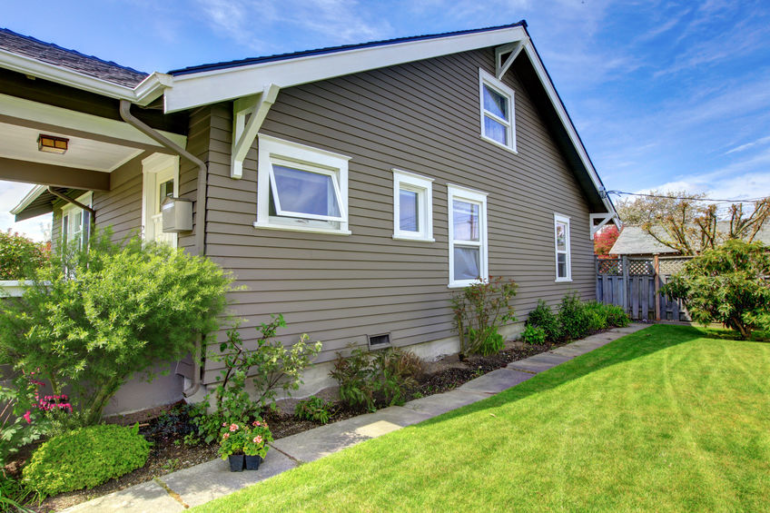
Homeowners sometimes fail to consider the importance of maintaining a proper distance between the home’s siding and the ground. However, this is vital to prevent serious problems. At a minimum, these could include water damage, rotting, and attracting termites and other wood-destroying insects. A good rule of thumb is that a home’s siding will deteriorate faster the closer it sits to the ground. Conversely, placing siding as high above the grade as possible will help to guard against destruction caused by moisture problems other than flooding.
What is the Ideal Clearance for a Home’s Siding?
Homeowners should develop a habit of checking the perimeter of their home consistently to see how far the ends of the siding go into the dirt. This is true whether the siding is made from brick, stucco, vinyl, wood, or another material. It is especially critical to check the dirt and siding before seasons that could bring a lot of excess moisture. Preferably, the siding should sit between six and eight inches above the ground. Adjacent concrete siding also requires the same measure of clearance.
How to Make a Larger Clearance
It won’t always be possible for homeowners to remove as much dirt as they would like. If so, they should keep in mind that a clearance of less than six inches is better than none. While removing dirt to increase the space between it and the siding, it’s best to avoid trenching next to the home’s foundation. Instead, the homeowner should slope the ground near the home’s foundation as much as possible so water will run off it instead of seeping into the siding. Downspouts should also contain splash blocks or extenders to move water away from the foundation of the home.

(Image from: https://www.landdesigns.com/keep-dirt-mulch-off-house/)
It may be necessary to cut plants a few inches away from the foundation, particularly ivy and dense foliage. If left in place, plants can hold moisture and prevent the circulating air from drying as quickly as it would have otherwise. Plants also give destructive rodents a place to hide.
What to Do with the Excess Dirt
After removing excess dirt from their home’s foundation, homeowners then need to decide what to do with a potentially large pile. Unfortunately, leaving it in place could cause even more problems than the original lack of clearance. All it takes is one good rain for the dirt pile to turn into a messy pile of mud that becomes an even greater challenge to remove from the property. Dirt can also be extremely heavy and difficult to remove manually.
Not only do homeowners risk injuring themselves, their city may also impose limitations on what it will allow people to dispose of in city containers. It can turn out to be an expensive undertaking if the city decides the dirt is not pure dirt, meaning it also contains concrete or other debris. Homeowners who want to avoid these problems might consider using the dirt as potting soil, offering it free to a neighbor or friend, or creating several berms on the property.
Hiring a dirt hauling professionals like EZ Junk Hauling is also an option. This get the dirt off the homeowner’s property in a timely manner without having to worry about costs, injury, or even damage to their vehicle.

